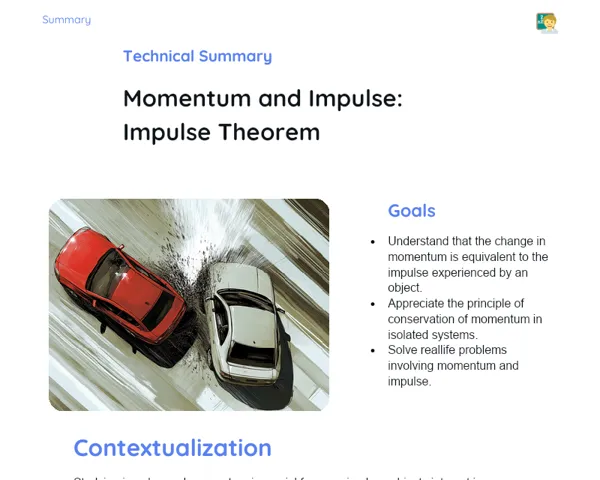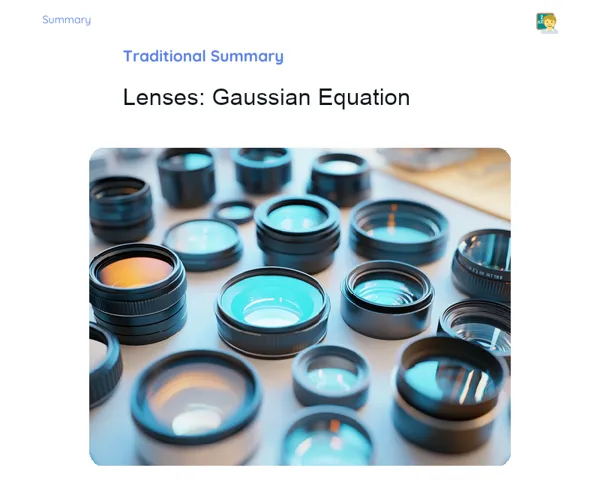Goals
1. Describe string vibrations in a steady state.
2. Relate wavelength to the corresponding harmonic.
3. Correlate the length of the string with the harmonics produced.
Contextualization
String vibration is something we come across regularly, whether it's in music or various technologies. For example, the vibration of guitar or piano strings is crucial for producing sound. Additionally, data transmission through fiber optic cables involves wave and vibration concepts. Understanding this phenomenon facilitates the crafting and fine-tuning of musical instruments, as skilled luthiers do, and is equally vital for sound engineers aiming to create the perfect acoustic setting. In civil engineering, knowledge of vibrations is essential for ensuring the safety and stability of structures, such as bridges and buildings.
Subject Relevance
To Remember!
String Vibration
String vibration takes place when a string is put under tension and is disturbed, producing waves that travel along its length. These waves can reflect at the ends of the string, forming interference patterns that lead to standing waves. The frequency of these waves depends on factors such as the tension in the string, its length, and its linear density.
-
The vibration frequency correlates with the string's tension: more tension results in a higher frequency.
-
The length of the string has a direct impact on wavelength: longer strings create waves with longer wavelengths.
-
Standing waves are formed through the interference of waves moving in opposite directions.
Harmonics
Harmonics are whole number multiples of the underlying frequency of the vibrating string. When a string vibrates, it produces not only the fundamental frequency but also whole number multiples of that frequency, which are referred to as harmonics. These harmonics enhance the richness and texture of the sound emitted by the string.
-
Harmonics are whole number multiples of the fundamental frequency.
-
Harmonics define the timbre of a musical instrument.
-
The presence of various harmonics improves the sound quality.
Wavelength
Wavelength is defined as the distance between two successive points that are in phase on a wave. In the context of a vibrating string, wavelength is directly linked to the string's length and the nodes and antinodes formed. Wavelength can be gauged by measuring the distance between consecutive nodes or antinodes.
-
Wavelength is inversely related to frequency: higher frequencies lead to shorter wavelengths.
-
Wavelength can be seen as the distance between successive nodes or antinodes.
-
The string's length determines the possible wavelengths that can be created.
Practical Applications
-
Musical Instrument Manufacturing: Luthiers utilize their understanding of string vibrations to fine-tune the quality of instruments like guitars and pianos.
-
Sound Engineering: Engineers apply these principles to develop perfect acoustic conditions in recording studios and concert halls.
-
Civil Engineering: Grasping the dynamics of vibrations is key to maintaining the safety and integrity of structures such as bridges and buildings, thus preventing potential failures.
Key Terms
-
String Vibration: Oscillatory motion of a tensioned string that creates waves.
-
Harmonics: Whole number multiples of the fundamental frequency of a vibrating string.
-
Wavelength: Distance between two successive points that are in phase on a wave.
-
Nodes: Points along the vibrating string where the amplitude of the wave is zero.
-
Antinodes: Points along the vibrating string where the amplitude of the wave reaches its maximum.
-
Steady State: Condition in which reflected waves on the string create stable interference patterns, leading to standing waves.
Questions for Reflections
-
How does an understanding of string vibrations influence the sound quality of a musical instrument?
-
In what ways can knowledge of harmonics be utilized in sound engineering to enhance the acoustics of an environment?
-
What challenges does civil engineering face concerning vibrations in structures, and how can understanding these concepts assist in overcoming them?
Practical Challenge: Analyzing Harmonics with a Monochord
Assemble a monochord and utilize it to observe and measure the various harmonics and wavelengths.
Instructions
-
Collect the required materials: a wooden board, a nylon string, two wooden supports, a set of weights, a small hook, and a ruler.
-
Secure the wooden supports at the ends of the board and stretch the nylon string between them.
-
Modify the string's tension using the weights and the hook.
-
Measure the length of the string with the ruler and identify the different nodes and antinodes formed during vibration.
-
Document your observations regarding the different harmonics and wavelengths measured.
-
Reflect on how string tension affects the frequency of vibrations and the formation of harmonics.


